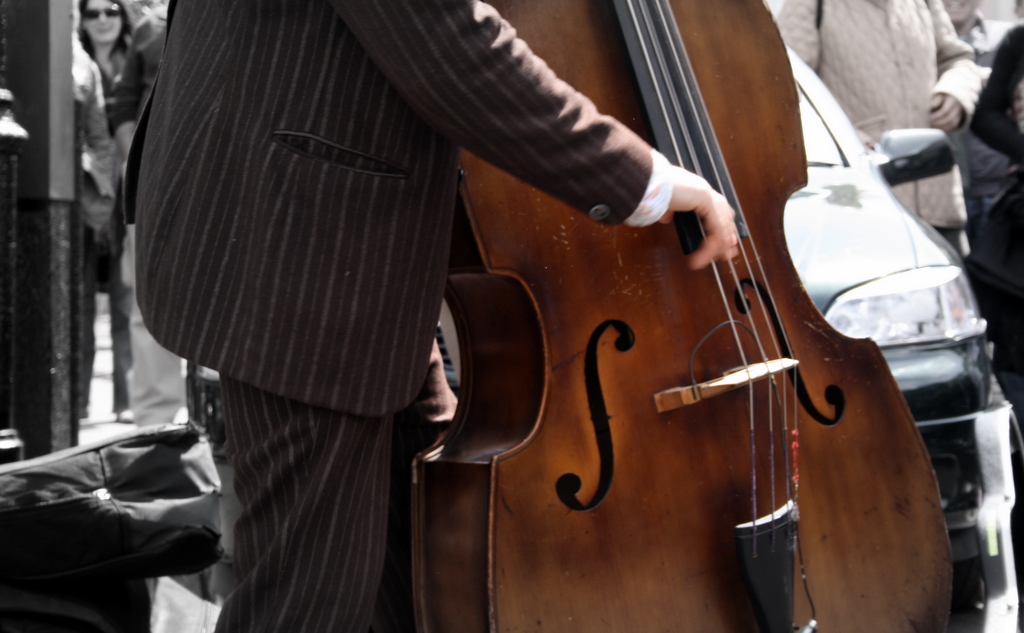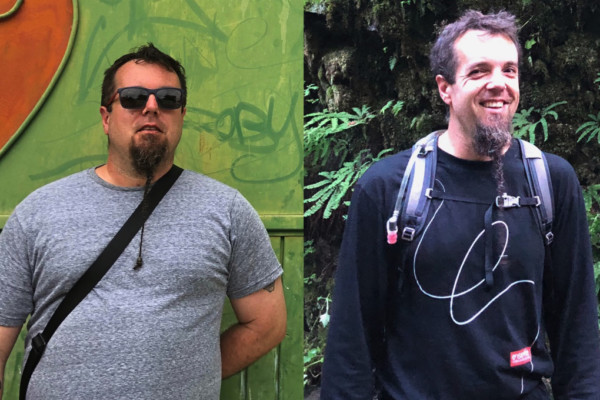Dealing with Blisters on the Pizzicato Hand

So, you recently acquired a double bass. This is great news! Welcome!
Or perhaps you simply resolved that this was the year you got serious about playing and you increased your time at the instrument. Fantastic! Or maybe you picked up some regular gigs! Even better!
Either way, this recent positive change in your life will allow you the opportunity to open up some new musical horizons and, perhaps, (if you are not playing arco), some much anticipated blistering of the right hand fingers. Sound fun? Yeah, not to me either.
This is a fairly common complaint, not only from beginners, but also from more experienced players. The culprit is a simple one: We don’t have our callouses built-up adequately. What defines adequately will vary based on what you are doing, and how long you are doing it for, of course.
Whatever the circumstances, the prescriptions for blistering under any situation are fairly straightforward. Below are a few helpful hints to help you minimize and live through this unfortunate phase and come out the other end a calloused monster of double bass.
- If at all possible, start moderately and increase your playing time slowly, by only a few minutes a day. If you do this intelligently and with restraint, you may even manage to avoid blistering altogether. Try to avoid overplaying so much that you get a “blood blister.” If you get this, you really went too far. Be aware of how your fingers are responding as you play. Avoid overdoing it. Think long term.
- Once you get a blister, I suggest lancing it with a sterile, small pin. Do not tear the skin away, however. Simply a small hole to drain the blister is sufficient. You don’t have to lance it, it will break open on it’s own. However, if you allow this to happen you will more quickly expose a greater amount of tender skin below, which will cause greater than needed discomfort in the next phase of our callous journey.
- Once you blister, you may need to reduce the amount of time you play with that finger temporarily, but don’t stop entirely. We want to use it daily, but moderately. Perhaps you play for less time, perhaps you play with less force. If you do so, it will cause you discomfort for a short while, but this discomfort will generally go away within a few days as the outer layer of skin hardens.
- Once the outer layer of the blister hardens, you will have a few days to a week (generally) of bliss where you think you might have callouses. The hardened skin also helps the attack of the string. It’s a beautiful, if temporary, time. However, the most likely scenario is that while you are playing this hardened layer of skin will fall off revealing a tender layer of skin below.
- Never fear, repeat the process above. Although you may blister again, it is likely you won’t. If you do, you know what to do. The important part, especially at this stage, is daily use of the finger, even with the blistered or tender area, but with moderation and restraint. Obviously we want to keep this area clean as well.
- In my experience and observation, most people who follow the advice above go through callous building process twice and twice only. (i.e. one time of everything listed above: blisters, hardening of the blisters, falling off of dead skin, tenderness (possible re-blistering) and finally a more permanent callous.
- The key is to be moderate, but consistent, about daily use of the finger in question.
A few final notes:
Once you get a layer of finger callous, you will need to continue playing on a regular basis to avoid going through the blistering process all over again. Keep in mind, that even if you do this, when you make a quick jump in the amount of time you are plucking, you can still find yourself blistering again.
For example, let’s say you have been playing an hour a day for years, and yesterday you played for four hours straight. You may blister, under the callous. Your callouses were prepared for 1hr a day, but not 4hrs. As with so many things on the double bass, quick jumps in time spent at the instrument can cause discomfort, pain or even damage. Ideally, you would slowly work up to the 4 hours a day of pizzicato, allow the pre-existing callous to thicken and harden without blistering.
If you are in a situation where you can’t take care of your self in this way, (perhaps you have a blistery mess and 6 gigs a week for the next several weeks). I suggest the following to get through it:
- Use alternate fingers as much as possible. For example, if you are used to using one and two, use a bit of three in there to take the load off of 1 and 2.
- Use a different area of the finger i.e. a non-blistered area.
- If possible, without sacrificing the music, play with less force.
- Cover your fingers with tightly wrapped sports tape. You will still get some friction on the blistered area, but it is much more manageable and can get you through some gigs.
- Some people suggest super glue. I advise against this. Mainly because I haven’t found it that helpful. Additionally, I suspect it might not be very healthy, and finally, it also doesn’t seem to help in the long term in our quest to build the callouses we will need to do our job well in the future.
What do you do to avoid and tend to blisters? Let us know in the comments below.
Dr. Donovan Stokes is on the faculty of Shenandoah University-Conservatory. Visit him online at www.donovanstokes.com and check out the Bass Coalition at www.basscoalition.com.




I’ve used “liquid band-aid” in the past and it works great!